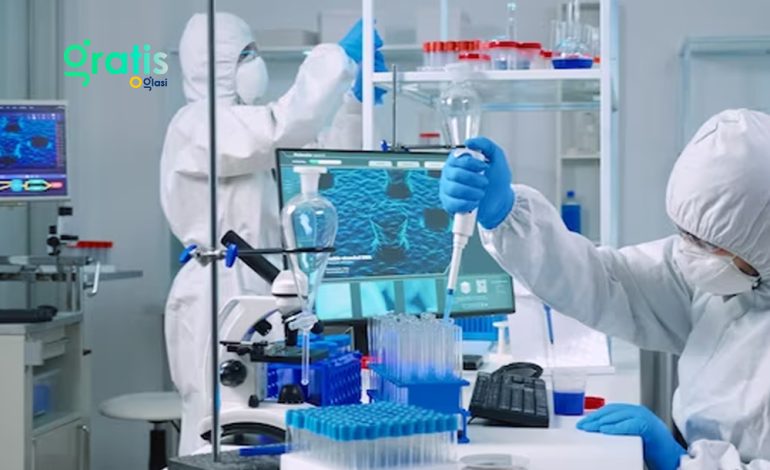
5 Most Common Challenges Faced by Medical Laboratory
Medical laboratory are super important in healthcare because they help with tests, research, and keeping track of diseases. They’re where samples like blood and urine are looked at to learn about people’s health. Medical labs cover chemistry, blood studies, germs, immunity, and genes. Each area helps us understand and deal with different sicknesses.
Medical labs also play a big role in keeping the public healthy and dealing with outbreaks. They find diseases, keep an eye on their spread, and spot new ones early. This helps stop illnesses from spreading and keeps communities safe. Medical labs are important in healthcare because they help us find better ways to diagnose and treat diseases before they become a big problem. They don’t just help one person at a time; they also help us understand more about how to keep everyone healthy and make discoveries in science.
Regulatory Compliance Issues
Medical laboratory follow strict rules to ensure their tests are accurate and safe. Following these rules is important to keep patients safe, make sure the tests are done right, and reduce the chances of mistakes or using samples that aren’t good.
Understanding Regulatory Standards
The rules for medical laboratory vary depending on where they are and come from government groups, accrediting bodies, and professional organizations. These rules cover things like lab buildings, equipment, who works there, making sure things are done right, keeping records, and how results are reported.
Compliance Challenges in Medical laboratory
Following all the rules can be tough for medical laboratory. They have to understand new rules as they come up and make changes to follow them. This takes a lot of time and money, and labs must balance following the rules and caring for patients efficiently. Sometimes, it’s hard for labs to understand and meet all the requirements because they keep changing. They always have to stay alert and be ready to adapt to new rules.
For instance, labs must invest in staff training and new equipment to meet updated standards, which can strain their budgets and workforce. Additionally, interpreting complex regulations requires expertise and time, adding another layer of challenge. Moreover, with healthcare rules frequently evolving, labs must continuously monitor for updates and adjust their practices accordingly. These factors make it demanding for labs to stay compliant while providing quality patient care.
Impact on Operations and Patient Care
Not following the rules set by regulators can cause big problems for labs and the care they provide to patients. If labs don’t meet these rules, they might be fined, lose their certification, or even face legal issues. This could damage the lab’s reputation and make it hard for them to keep running.
Not following the rules can also make test results less accurate and reliable. This might lead to wrong diagnoses, treatments, and patient outcomes. That’s why labs need to follow the rules set by regulators. It helps keep patients safe, makes people trust the lab, and keeps the care they provide reliable.
Equipment and Technology Hurdles
In medical laboratory, it’s important to deal with equipment and technology problems so that tests work well and are done quickly and accurately. Labs face challenges in getting new equipment, keeping it working well, and keeping up with new technology.
Procurement Challenges
Getting the latest equipment and technology is hard for medical laboratory because it costs a lot and can be tricky to manage. Labs must plan carefully and use their money wisely because they might not have much to spend. They need to figure out what equipment they need, look at different choices, make deals, and find the money to buy what they need while ensuring it’s worth it.
Additionally, labs must consider how they’ll keep the equipment working well over time. This means they must budget for maintenance and repairs, which can add up quickly. Sometimes, they might even need to train their staff to use the new equipment properly.
Furthermore, labs often compete for limited funding with other healthcare system parts. So, they must make a strong case for why they need the equipment and how it will improve patient care. It’s a complex process that requires careful planning and negotiation to ensure labs can provide patients with the best possible service while managing their resources wisely.
Maintenance Issues
Ensuring lab equipment works well and doesn’t break down requires regular care and attention. Labs have difficulty keeping up with maintenance schedules, finding replacement parts, and fixing unexpected problems. They need to calibrate equipment regularly, do preventive maintenance, and follow what the manufacturer says to keep the risk of breakdowns low, avoid disrupting tests, and keep test results accurate.
Keeping Up with Technological Advances
New technology changes quickly and brings good things and tough things for medical laboratory. Labs must keep up with new tech, trends, and ways of doing things to stay competitive, do better tests, and meet patients’ needs as they change. But, to keep up with new tech, labs must spend money on training their staff, helping them learn more, and updating their systems. They also have to think about how new tech works with what they already have, deal with any problems it might cause, and ensure everyone can use it easily. It’s a lot of work, but it helps labs improve.
Staffing and Workforce Management
Having the right people and managing them well is important for medical labs to work smoothly. Labs need to find the right people to hire and keep them happy so they stay. They also need to ensure their staff learn new things and improve their jobs. It’s all about having a team that knows what they’re doing and wants to do it well.
Recruitment Challenges
Finding the right people to work in medical laboratory can be hard because there might not be enough skilled workers in some areas. Also, other healthcare places might want the same people, and where the lab is located can also make it tough to find workers. Labs must try different ways to find people, like putting ads where the right people might see them, going to job fairs, and working with schools to find students who want to work in labs when they graduate.
Retention Issues
Keeping good lab workers is just as important as finding them. Labs can have difficulty keeping people because they might not have chances to move up in their jobs, get paid enough, or get good benefits. The job can also be stressful. To keep workers, labs should make the work environment nice, pay them well and give good benefits, help them learn more about their jobs, and thank them when they do good work.
Training and Skill Development
Lab workers need to keep learning new things to do their jobs well as things change. Labs must ensure their staff know how to do their jobs right by giving them good training programs.
These programs teach them what they need to know, like how to use new machines, follow the rules, and keep tests accurate. Labs should also help their staff learn more by letting them attend classes, get certifications, and go to workshops to get better at their jobs and advance in their careers.
Quality Control and Assurance
Making sure tests are done right is important in medical laboratory. They do this by checking their work’s quality to ensure it’s accurate and reliable. Labs use different ways to do this, like checking their work carefully and following the rules. It’s all about ensuring the tests’ results are good and meet the standards set by regulators.

- Ensuring accuracy and precision: Labs ensure their machines work right by checking them often. They also test their methods to make sure they give the right results. By following strict rules and standards, labs ensure they don’t make mistakes when doing tests. In addition, labs compare their results with known standards to ensure accuracy. They also track how well their equipment performs over time, making adjustments to maintain accuracy.
- Addressing quality control failures promptly: Even though labs try hard to ensure everything is right, sometimes things can still go wrong. This might happen because a machine breaks, the environment affects the test, or someone makes a mistake. Labs need strong systems to find and fix these problems immediately. They look into why the problem happened, fix it, and try to stop it from happening again.
- Implementing continuous improvement strategies: Labs work hard to improve things by following careful steps. They look for ways to improve things, try ideas based on good evidence, and encourage their staff to do their best. Labs also keep an eye on how well they’re doing by looking at their results, studying data, and joining programs that test how good they are at their job. By doing all this, labs keep improving at doing tests accurately and quickly.
Emerging Technologies and Innovations
In the changing world of medical laboratory new technologies and ideas can improve tests, help patients more, and teach us new things in science. But using new technologies can be hard, and labs must figure out how to use them well to get all the good things they promise.
Adoption Challenges
Using new technologies in labs can be hard because it costs a lot, doesn’t always work with what they already have, and needs people who know how to use it. Before using new tech, labs need to think if it will work well with what they already have and how they do things. Additionally, labs might need to change how they work to fit the new technology. This can take time and might disrupt their usual workflow. They also need to make sure they have enough money to buy and maintain the new technology and that they can find people who know how to use it properly.
Integration with Existing Infrastructure
Making new technologies work well with what labs already have makes them even more useful and helps them do their job better. Labs must ensure the new technology works well with their old stuff, manages data correctly, and fits in with how they already do things. They might need to change the software or upgrade their hardware and work with those who made the new technology to fit the lab’s needs.
Leveraging New Technologies for Enhanced Performance
Even though it can be hard initially, new technologies can help labs do their job better and care for patients more effectively. With fancy new machines, automation, and better data analysis methods, labs can do more tests, make fewer mistakes, and get results faster. By using these new technologies, labs can learn new things, do more types of tests, and be leaders in making tests better.
Frequently Asked Questions (FAQs)
Following the rules can be tough because they keep changing, and labs must find ways to understand the new rules, make changes, and deal with insufficient resources.
Not following the rules can lead to punishments, losing accreditation, and problems with patient care because the test results might be wrong, and there could be legal issues.
The problems include it costs a lot to start, it’s hard to work together, and people need special training. Making it work with what’s already there is important.
Conclusion
Medical laboratory are:
- Vital pillars within the healthcare ecosystem.
- Offering critical diagnostic services.
- Conducting essential research.
- Contributing to public health surveillance.
Even though labs are really important, they deal with many tough challenges. These include following rules, getting the right equipment, finding the right people to work, and using new technology. It’s important to work hard to follow the rules, keep things running well, and ensure patients are safe. Also, using new technology can improve tests and help patients, but it can be hard to start using. As labs change and grow, they need to keep working on these challenges to keep helping people and making science better.






